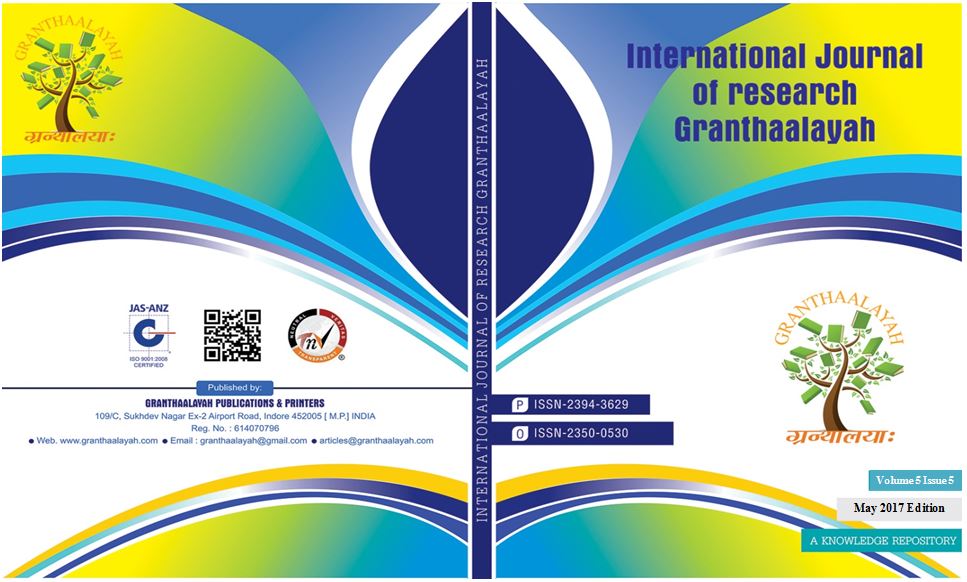DARK ENERGY AND THE ACCELERATING UNIVERSE: CHALLENGES IN COSMOLOGY
DOI:
https://doi.org/10.29121/granthaalayah.v5.i5.2017.5982Keywords:
Dark Energy, Cosmological Constant, Accelerating Universe, General Relativity, Cosmic Microwave Background, Supernova Observations, Large-Scale Structure, Quintessence, Modified Gravity, ΛCDM Model, Hubble Constant, Cosmic Acceleration, Redshift, Universe Expansion, Equation of StateAbstract [English]
The discovery of the accelerating expansion of the universe has reshaped our understanding of cosmology, introducing dark energy as a dominant yet enigmatic component of the cosmos. Observations from Type Ia supernovae, cosmic microwave background radiation, and large-scale galaxy distributions provide strong evidence that the universe's expansion is accelerating, contradicting earlier expectations of a decelerating cosmos. Theoretical models, including the cosmological constant (Λ) and quintessence, attempt to explain dark energy, but its fundamental nature remains elusive. This mysterious force raises profound questions about the validity of Einstein’s General Relativity on cosmic scales and challenges our understanding of fundamental physics. Dark energy's implications extend to the ultimate fate of the universe, influencing scenarios such as eternal expansion, the Big Rip, or modifications to gravity itself. Future research, including next-generation space telescopes and improved large-scale structure surveys, aims to unravel this cosmic puzzle, offering new insights into the universe’s fundamental forces.
Downloads
References
Caldwell, Robert R., Rahul Dave, and Paul J. Steinhardt. “Cosmological Imprint of an Energy Component with General Equation of State.” Physical Review D, vol. 59, no. 12, 1999, p. 023510.
Carroll, Sean M. “The Cosmological Constant.” Living Reviews in Relativity, vol. 4, 2001, p. 342. DOI: https://doi.org/10.12942/lrr-2001-1
Eisenstein, Daniel J., et al. “Detection of the Baryon Acoustic Peak in the Large-Scale Correlation Function of SDSS Luminous Red Galaxies.” The Astrophysical Journal, vol. 633, 2005, p. 564.
Nojiri, Shinichi, and Sergei D. Odintsov. “Unified Cosmic History in Modified Gravity: From f(R) Theory to Lorentz Non-Invariant Models.” Physics Reports, vol. 505, 2011, pp. 59–144. DOI: https://doi.org/10.1016/j.physrep.2011.04.001
Perlmutter, Saul, et al. “Measurements of Ω and Λ from 42 High-Redshift Supernovae.” The Astrophysical Journal, vol. 517, no. 2, 1999, pp. 565–586. DOI: https://doi.org/10.1086/307221
Planck Collaboration. “Planck 2015 Results. XIII. Cosmological Parameters.” Astronomy & Astrophysics, vol. 594, 2016, p. A13.
Riess, Adam G., et al. “Observational Evidence from Supernovae for an Accelerating Universe and a Cosmological Constant.” The Astronomical Journal, vol. 116, no. 3, 1998, pp. 1009–1038. DOI: https://doi.org/10.1086/300499
Sahni, Varun, and Alexei Starobinsky. “Reconstructing Dark Energy.” International Journal of Modern Physics D, vol. 15, no. 12, 2006, pp. 2105–2132. DOI: https://doi.org/10.1142/S0218271806009704
Spergel, David N., et al. “Wilkinson Microwave Anisotropy Probe (WMAP) Three-Year Results: Implications for Cosmology.” The Astrophysical Journal Supplement Series, vol. 170, no. 2, 2007, pp. 377–408. DOI: https://doi.org/10.1086/513700
Starobinsky, Alexei A. “Future and Origin of Our Universe: Modern View.” Gravitation and Cosmology, vol. 6, no. 2, 2000, pp. 157–163. DOI: https://doi.org/10.1142/9789812793324_0008
Weinberg, Steven. “The Cosmological Constant Problem.” Reviews of Modern Physics, vol. 61, no. 1, 1989, pp. 1–23. DOI: https://doi.org/10.1103/RevModPhys.61.1
Zlatev, Ivaylo, Limin Wang, and Paul J. Steinhardt. “Quintessence, Cosmic Coincidence, and the Cosmological Constant.” Physical Review Letters, vol. 82, no. 5, 1999, pp. 896–899. DOI: https://doi.org/10.1103/PhysRevLett.82.896
Downloads
Published
How to Cite
Issue
Section
License
Copyright (c) 2017 Shiv Shakti Singh

This work is licensed under a Creative Commons Attribution 4.0 International License.
With the licence CC-BY, authors retain the copyright, allowing anyone to download, reuse, re-print, modify, distribute, and/or copy their contribution. The work must be properly attributed to its author.
It is not necessary to ask for further permission from the author or journal board.
This journal provides immediate open access to its content on the principle that making research freely available to the public supports a greater global exchange of knowledge.






























